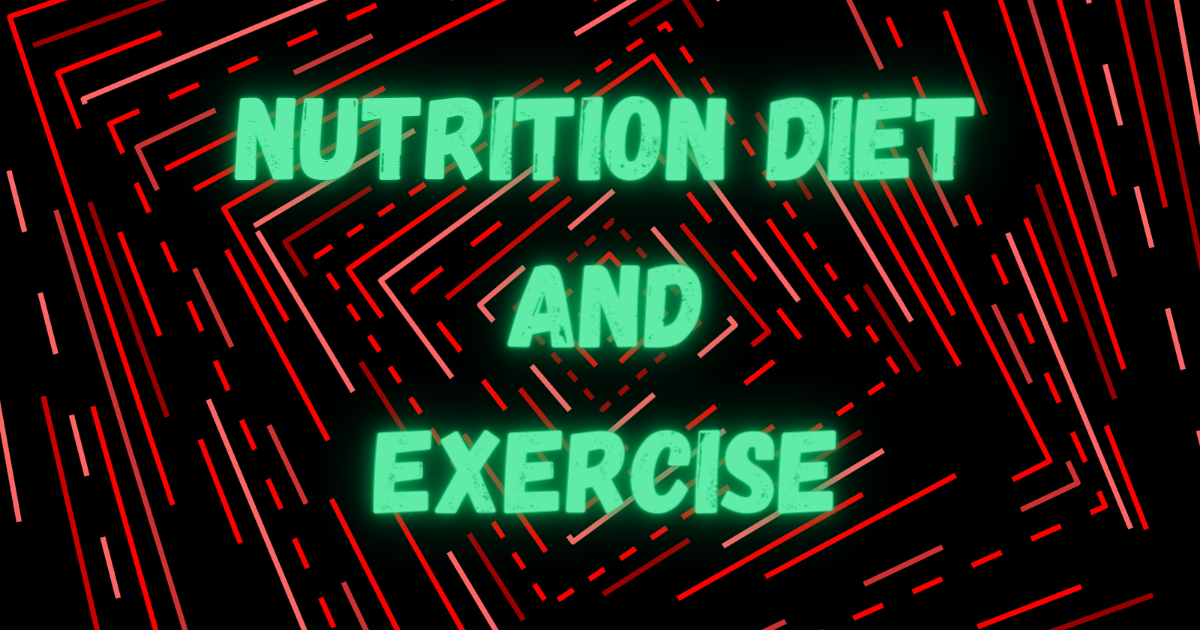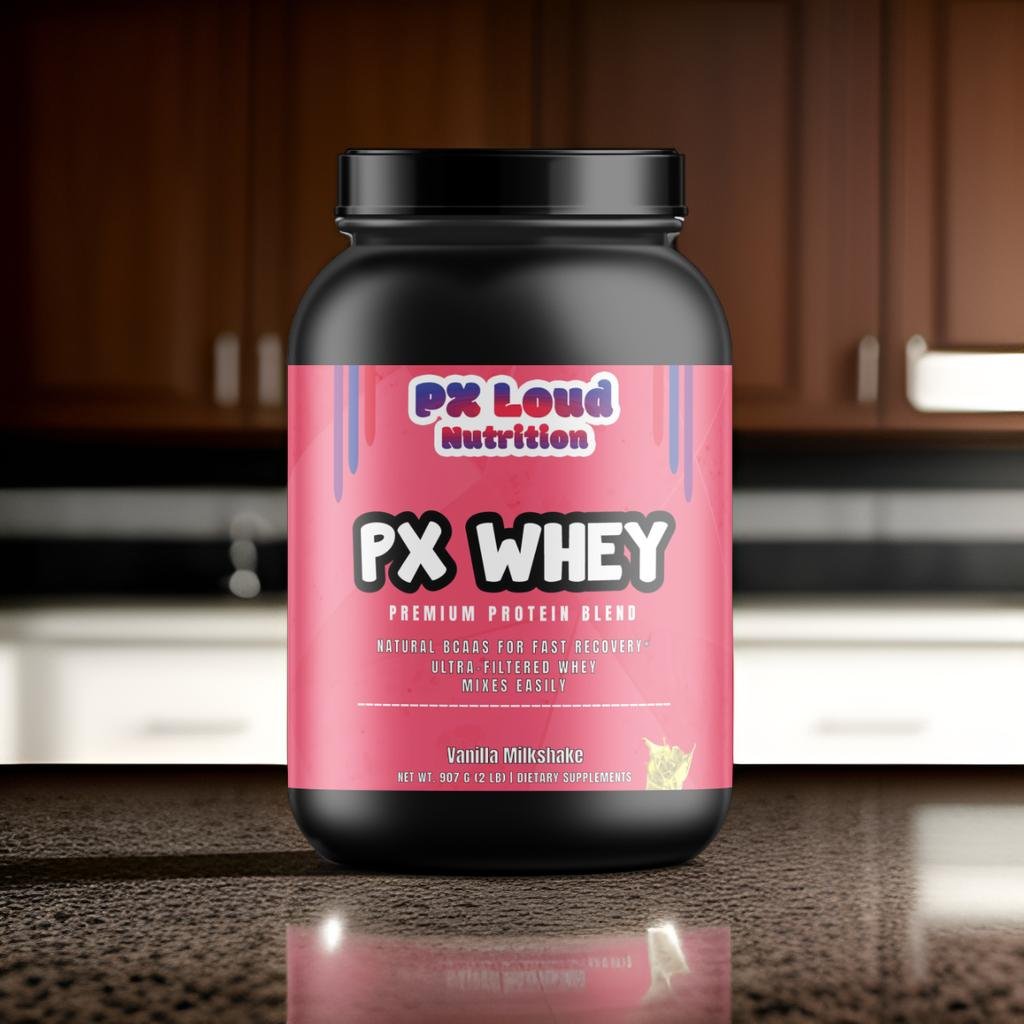Whey protein is a popular dietary supplement that is derived from milk during the cheese-making process. It’s a complete protein because it has all nine essential amino acids that the body can’t make by itself. Whey protein is quickly and easily absorbed by the body, making it an ideal choice for post-workout recovery. There are three main types of whey protein: concentrate, isolate, and hydrolysate. Whey protein concentrate has less protein and contains lactose and fat. In contrast, whey protein isolate has removed lactose and fat, making it higher in protein content. Whey protein hydrolysate is pre-digested, making it the fastest absorbing form of whey protein. Check out our products here at PxLoud.com and let’s maximize your gains with Whey Protein Powder.
Proteipder has high biological value for tissue growth, containing branched-chain amino acids, particularly leucine, crucial for muscle synthesis. It has health benefits like promoting muscle growth, aiding weight loss, reducing hunger, lowering blood pressure, and improving immune function.Yes, it helps a lot! Whey protein is low in lactose and suitable for those with lactose intolerance. It’s a convenient way to boost protein intake and support health and fitness goals.
Benefits of Whey Protein Powder
The benefits of whey protein powder are numerous and well-documented. One of the primary advantages of whey protein is its ability to promote muscle growth and enhance recovery after exercise. The high concentration of BCAAs, particularly leucine, in whey protein stimulates muscle protein synthesis, leading to greater muscle mass and strength over time. This makes whey protein an essential supplement for athletes, bodybuilders, and anyone looking to improve their physical performance. Whey protein aids weight loss by boosting fullness and reducing calorie intake, particularly when combined with a controlled diet and exercise.
Whey protein has health benefits like lowering blood pressure, improving blood sugar control, reducing inflammation, and supporting the body’s antioxidant production. It’s valuable for a healthy lifestyle.
How to Choose the Right Protein Powder
Consider whey protein types: concentrate for cost-effective option, isolate for lactose intolerance or high protein intake, hydrolysate for fast recovery after intense workouts.
Consider ingredient list: minimal sugars, flavors, fillers. Choose whey with stevia, monk fruit, lactase, protease. Third-party tested for quality and purity to avoid contaminants and banned substances.
Furthermore, consider the brand reputation and customer reviews when selecting a whey protein powder. Look for reputable brands with a history of producing high-quality supplements and positive feedback from consumers. Lastly, take into account your specific dietary preferences and restrictions, such as vegan or gluten-free, when choosing a whey protein powder. By considering these factors, you can select the right whey protein powder that meets your individual needs and supports your health and fitness goals.
When to Consume Whey Protein Powder for Maximum Gains
| Time of Consumption | Effect on Gains |
|---|---|
| Before Workout | Provides energy and amino acids for muscle building |
| After Workout | Helps in muscle recovery and growth |
| Between Meals | Supports muscle protein synthesis throughout the day |
| Before Bed | Provides slow-release protein to prevent muscle breakdown during sleep |
The timing of whey protein consumption can significantly impact its effectiveness in promoting muscle growth and recovery. One of the most critical times to consume whey protein is immediately after a workout. Whey protein after exercise supports muscle repair and growth by stimulating muscle protein synthesis.
Add whey protein to meals to support muscle building and weight management. It increases overall protein intake, maintaining muscle mass and promoting satiety. Whey protein between meals or as a snack helps curb hunger and prevent overeating, aiding weight management. Timely consumption of whey protein maximizes its benefits.
Incorporating Protein Powder into Your Diet
Incorporating whey protein powder into your diet can be done in various ways to meet your individual preferences and nutritional needs. One of the simplest ways to consume whey protein is by mixing it with water or milk in a shaker bottle for a quick and convenient post-workout shake. This allows for rapid absorption of whey protein to support muscle recovery and growth. Additionally, you can blend protein powder into smoothies or shakes with fruits, vegetables, and other ingredients to create a nutritious and satisfying meal or snack.
Another popular way to incorporate whey protein into your diet is by adding it to recipes such as pancakes, muffins, or energy balls to increase their protein content. This allows for a versatile and enjoyable way to consume whey protein while adding variety to your diet. Furthermore, you can mix whey protein powder into yogurt or oatmeal for a high-protein breakfast or snack option. This provides a convenient way to boost the protein content of your meals without adding significant volume or changing the taste drastically.
Moreover, you can use whey protein powder as an ingredient in homemade energy bars or protein bars for a convenient on-the-go snack option. This allows you to customize the flavor and texture of the bars while ensuring they provide a good source of high-quality protein. Whey can be creatively included in your diet to support nutritional goals and add variety to meals and snacks.
Maximizing with Whey Protein Powder through Exercise
In addition to consuming whey protein powder strategically throughout the day, maximizing gains can be achieved by combining its use with effective exercise strategies.Resistance training, like weightlifting or bodyweight exercises, is crucial for muscle growth and strength development when taking whey protein powder. Regular resistance training enhances whey protein benefits for muscle growth.
Furthermore, incorporating progressive overload into your resistance training program can further enhance muscle growth when using whey protein powder. Progressive overload involves gradually increasing the intensity or volume of your workouts over time to continually challenge your muscles and promote adaptation.Increase weight, do more reps, adjust tempo for more muscle tension.
Additionally, ensuring adequate rest and recovery between workouts is crucial for maximizing gains with whey protein powder. The body requires sufficient time to repair and rebuild muscle tissue after intense exercise sessions. This includes getting adequate sleep, managing stress levels, and allowing for proper nutrition to support recovery processes.
Moreover, staying hydrated and maintaining overall nutritional balance are important factors in maximizing gains with whey protein powder through exercise. Proper hydration supports optimal muscle function and performance during workouts while aiding in nutrient transport throughout the body. Consuming a well-rounded diet that includes a variety of nutrient-dense foods alongside whey protein powder can provide essential vitamins, minerals, and macronutrients needed for overall health and fitness.
Potential Risks and Side Effects
Whey protein powder has benefits for muscle growth, recovery, and health, but there are risks and side effects to consider. One common concern with consuming whey protein powder is digestive discomfort, such as bloating, gas, or diarrhea. Occurs in those with lactose intolerance or sensitivity to dairy due to lactose in some whey protein forms. Whey isolate or hydrolysate with lactose removed can reduce digestive issues for sensitive individuals.
Another potential risk associated with whey protein powder is allergic reactions in individuals who are allergic to milk proteins. While rare, some people may experience allergic symptoms such as hives, swelling, or difficulty breathing after consuming whey protein. It is important for individuals with known milk allergies to avoid whey protein products or seek alternative sources of high-quality protein.
Furthermore, excessive consumption of whey protein powder beyond recommended doses may lead to kidney damage or other health complications over time. It is important to follow dosage guidelines provided by manufacturers and healthcare professionals when using whey protein supplements.
Commercial whey protein powders may have added sugars, flavors, or fillers that can lead to high calorie intake or negative health effects. It is important to read ingredient labels carefully and choose high-quality products with minimal additives.
Consider whey protein benefits but be aware of risks. Consulting with a healthcare professional or registered dietitian can provide personalized guidance on incorporating whey protein powder into your diet safely and effectively. Choose high-quality whey protein powder from a reputable source to avoid contaminants. Be cautious with lactose intolerance or dairy allergies. Use in moderation and follow recommended dosage. Seek professional advice before incorporating into your diet.
Want to know how whey relates to beef protein? Full Article.
- Summer Fitness: Stay Active with Outdoor Workouts - June 30, 2025
- Summer-Ready Abs: The Ultimate Workout - June 7, 2025
- Boost Your Health with Essential Summer Vitamins - June 4, 2025





